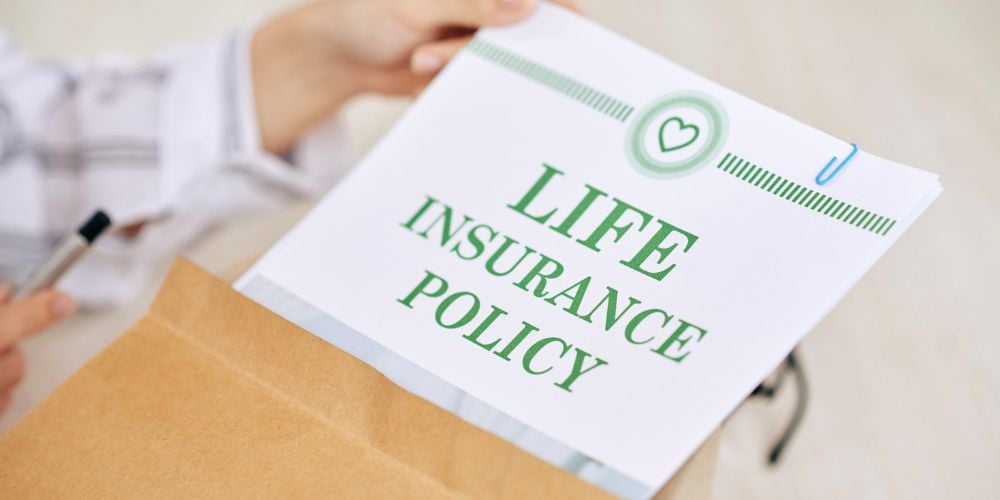Life insurance is a pillar of financial planning. However, as circumstances evolve, you might discover that your current life insurance policy no longer fits your needs. So, should you exchange your life insurance policy?
A 1035 exchange, a term taken from the Internal Revenue Code where it was established, allows policyholders to exchange one life insurance policy for another without immediate tax consequences. This process can potentially align your life insurance with your changing priorities.
Understanding 1035 Exchanges
A 1035 exchange is not a decision to be taken lightly. It refers to a section of the tax code that permits a tax-free transfer of an existing life insurance policy to a new policy with a different insurer, under certain conditions.
This action can be beneficial when it comes to upgrading your coverage, accessing improved features, or adapting to a more favorable pricing structure. Nevertheless, it’s essential to fully comprehend the legal aspects surrounding 1035 exchanges to ensure compliance and avoid any unforeseeable tax implications.

Should You Exchange Your Life Insurance Policy?
In life’s journey, financial roads can change. These changes may necessitate a review of your life insurance. For example, an increase in family size, a new business venture, or an unforeseen health complication might signal the need for increased coverage.
On the flip side, if kids have grown up and the mortgage is paid off, less coverage might now be adequate, possibly lowering premiums.
Additionally, if your current policy’s premiums are burdensome, or if you find a new policy offering similar benefits at a reduced cost, this could also warrant a policy exchange.
Markets evolve, and so do the products available to consumers. A newer policy might offer features that better suit your present financial goals.
Pros and Cons of Exchanging Life Insurance Policies
The advantages of exchanging your life insurance policy are closely tied with the flexibility it offers to alter your coverage as your life unfolds.
A policy exchange through section 1035 potentially allows for improved cash value growth, better death benefits, and access to more recent and beneficial policy features.
However, with the positives come the drawbacks. The most notable is the risk of surrender charges from your original policy.
Further, a new policy usually means a new period of contestability—a timeframe where claims may be denied based on policy terms.
Moreover, there might be a need for new medical underwriting, which could be a disadvantage if your health has changed since your original policy was issued. It is paramount to weigh these factors meticulously before proceeding with an exchange.
Steps to Take Before Exchanging Your Life Insurance Policy
Before you take the plunge into a new policy, a thorough analysis of your current plan is imperative. Look at the death benefits, the premiums, and the cash value growth of your existing policy. Compare these against the terms of the new policy you are considering.
Engaging with a reputable financial advisor or an experienced insurance professional is crucial. This expert can help steer you through the complex terrain of policy features and tax implications.
The actual exchange process itself is legal paperwork-heavy and necessitates attention to detail. The transaction must meet the stringent requirements of a 1035 exchange to avoid creating a taxable event.
Every stage of the exchange requires careful documentation, from signing off on the transfer with your current insurer to activating the new policy. It is a procedural dance that demands precision every step of the way.

Frequently Asked Questions
What is a 1035 exchange?
It is a provision that allows a policyholder to replace their life insurance policy with a new one without any immediate tax consequences.
Why would someone want to exchange their life insurance policy?
Financial needs change over time, and a new policy might offer better features, such as lower premiums, improved cash value growth, or more suitable coverage.
Are there any tax implications to exchanging a life insurance policy?
If executed properly as a 1035 exchange, there should not be any immediate tax implications. However, errors in the exchange process can lead to unexpected taxation.
Should I consult with a professional before making an exchange?
Yes, speaking with a financial advisor or insurance professional is advised to understand the implications fully and ensure that an exchange is beneficial for your specific situation.
Can I exchange my policy for any type of life insurance policy?
There are restrictions on the type of policies that can be exchanged. Generally, you can exchange a life insurance policy for another life insurance policy, endowment policy, or annuity contract without tax implications.
Conclusion
Making an informed decision about whether to exchange your life insurance policy can be as crucial as the initial decision to purchase coverage.
Take the time to appraise your current financial needs, seek guidance from professionals, and understand both the immediate and long-term consequences of a 1035 exchange.


 Tags:
Tags:










